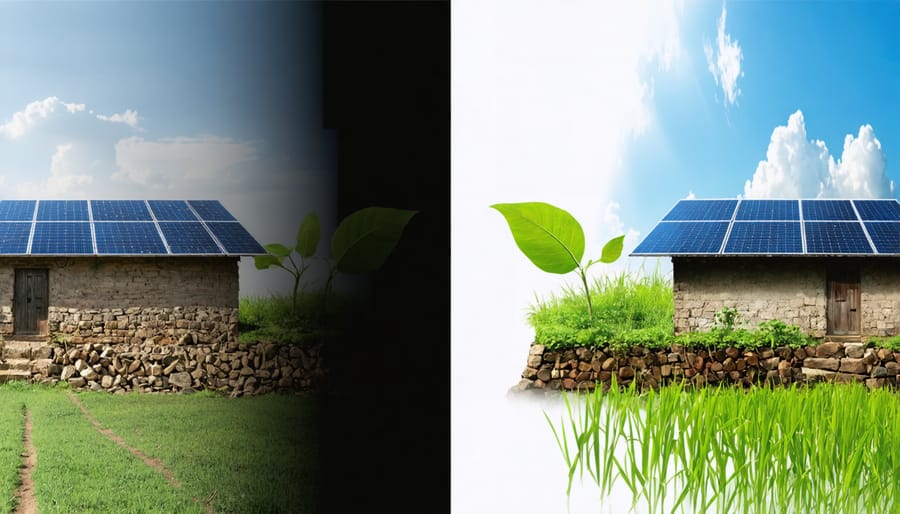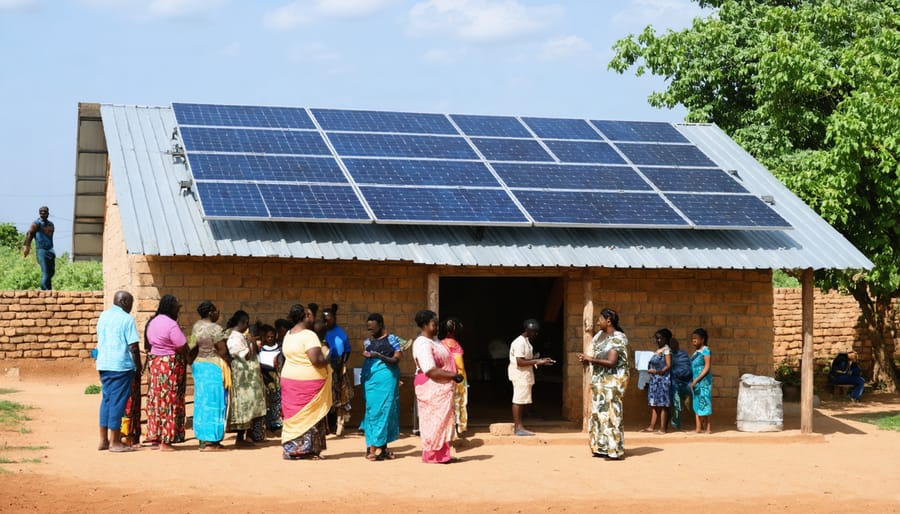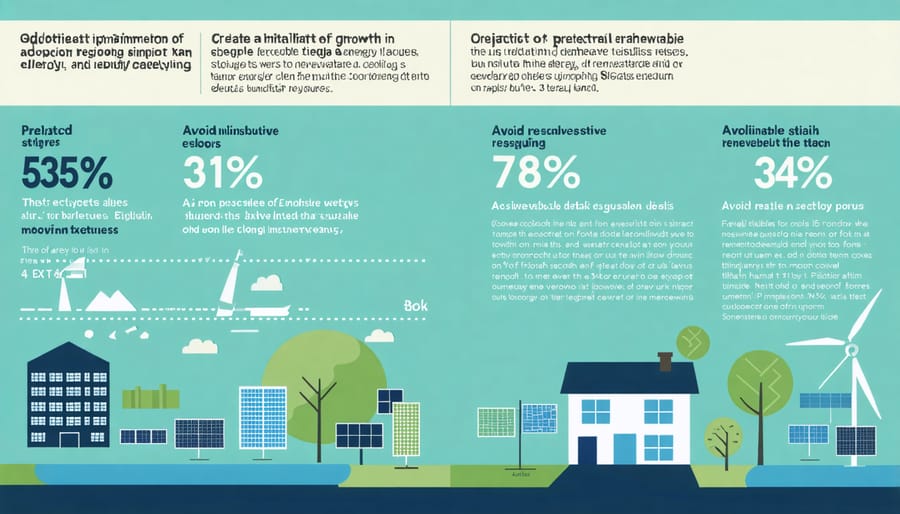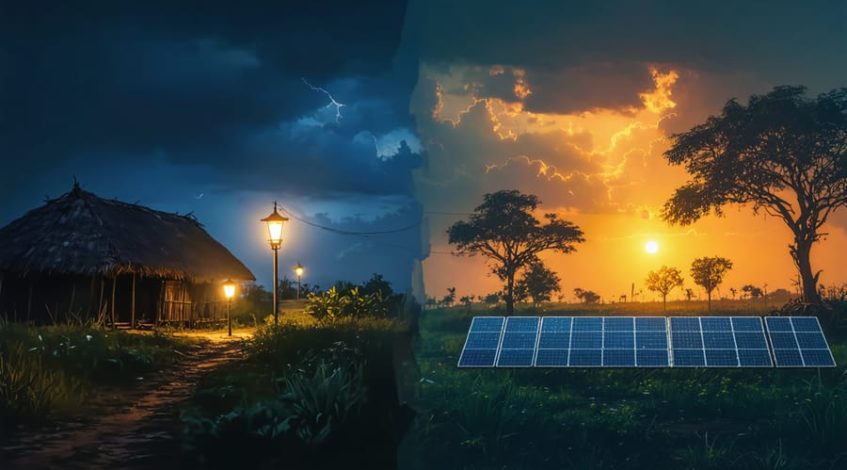Energy poverty affects 940 million people globally, denying them access to reliable electricity and hampering economic development across three continents. This persistent challenge represents one of the most significant barriers to achieving sustainable development goals, with profound implications for healthcare, education, and economic growth in developing nations.
While industrialized countries enjoy near-universal energy access, approximately 13% of the global population remains unable to power basic needs like lighting, refrigeration, and communication devices. The disparity creates a stark economic divide, with energy-poor communities spending up to 20% of their household income on inefficient and often dangerous energy alternatives such as kerosene and biomass fuels.
Recent technological advances in renewable energy, particularly in solar and micro-grid solutions, have created unprecedented opportunities to address this crisis. The declining costs of solar technology, coupled with innovative financing models and mobile payment systems, are transforming how we can deliver reliable power to underserved communities. These solutions not only address immediate energy needs but also align with global climate objectives, creating a sustainable pathway to universal energy access.
This critical intersection of social impact and technological innovation presents compelling opportunities for businesses, governments, and investors to participate in solving one of humanity’s most pressing challenges while developing emerging markets.
Understanding Global Energy Poverty
The Scale of the Crisis
The magnitude of global energy poverty presents a significant challenge, with approximately 733 million people lacking access to electricity and 2.4 billion people still relying on traditional biomass for cooking and heating. Sub-Saharan Africa and South Asia bear the heaviest burden, accounting for 75% of the world’s energy-poor population.
Recent data from the International Energy Agency (IEA) indicates that progress in energy access has slowed since 2015, with the COVID-19 pandemic reversing gains in several regions. For the first time since 2013, the number of people without electricity access increased in 2020, particularly affecting vulnerable communities.
The economic impact is equally substantial, with energy-poor households spending up to 20% of their income on inefficient energy sources. This perpetuates a cycle of poverty while hampering educational opportunities, healthcare delivery, and business development. Furthermore, traditional cooking methods contribute to approximately 3.8 million premature deaths annually due to household air pollution.
Despite these challenges, the transition to renewable energy solutions presents a viable pathway to address energy poverty while supporting sustainable development goals.

Economic and Social Impacts
Energy poverty creates a cascading effect on communities, significantly impacting economic growth and social development. In education, students without reliable electricity struggle to study after sunset, limiting their academic progress and future opportunities. Healthcare facilities operating without consistent power face challenges in storing vaccines, operating medical equipment, and providing emergency services, directly affecting community health outcomes.
The economic implications are particularly severe, as businesses cannot operate efficiently or expand their operations without reliable energy access. This creates a cycle of limited job opportunities and reduced income generation, keeping communities trapped in poverty. Productive hours are lost due to dependence on traditional fuel sources, with women and children often spending significant time collecting firewood instead of engaging in education or income-generating activities.
In rural areas, the lack of energy infrastructure hampers agricultural productivity and food preservation capabilities. Urban areas experience reduced industrial development and limited technology adoption, affecting their competitive position in the global market. Studies show that regions with reliable energy access demonstrate up to 17% higher GDP growth compared to energy-poor areas, underlining the critical relationship between energy access and economic development.
Renewable Energy Solutions for Energy Poverty
Solar Power’s Unique Advantages
Solar power presents a transformative solution to global energy poverty, offering unique advantages that make it particularly suitable for underserved communities. The decentralized nature of solar technology allows for rapid deployment in remote areas without requiring extensive grid infrastructure, significantly reducing implementation costs and timeframes.
One of the most compelling advantages is solar power’s scalability. Communities can start with basic solar home systems and gradually expand their capacity as energy needs and economic conditions evolve. This flexibility enables a progressive approach to electrification that aligns with local resources and capabilities.
The declining cost of solar technology has made it increasingly accessible to developing regions. Over the past decade, solar panel prices have dropped by more than 80%, making it one of the most cost-effective energy solutions for rural electrification projects. Additionally, minimal maintenance requirements and low operational costs ensure long-term sustainability.
Solar power’s environmental benefits extend beyond clean energy generation. In regions dependent on kerosene lamps or biomass burning, switching to solar reduces indoor air pollution, improving health outcomes for families. The technology also supports local economic development through job creation in installation, maintenance, and solar-related businesses.
The reliability of solar power in sunny regions, which often coincide with areas of high energy poverty, makes it particularly effective. Modern solar systems, coupled with energy storage solutions, can provide consistent power for essential services like healthcare facilities, schools, and small businesses, catalyzing social and economic development.
Solar energy also empowers communities through energy independence, reducing reliance on expensive fuel imports and volatile energy markets. This self-sufficiency strengthens local economies and promotes sustainable development pathways.
Cost-Effective Implementation Strategies
Implementing cost-effective solar solutions in energy-poor regions requires a strategic approach that balances affordability with sustainability. Drawing lessons from successful community solar initiatives, several key strategies have proven effective in addressing energy poverty.
Microfinancing programs have emerged as a crucial tool, enabling households to invest in small-scale solar systems through manageable payment plans. These programs typically involve local banks and cooperative societies, reducing initial capital barriers while ensuring long-term sustainability.
Pay-as-you-go (PAYG) solar systems have revolutionized energy access in developing regions. This model allows users to make incremental payments via mobile money platforms, activating their solar systems for specific periods. Once fully paid, users own their systems outright, creating a pathway to energy independence.
Bulk procurement initiatives have significantly reduced equipment costs. By aggregating demand across communities or regions, organizations can negotiate better prices with manufacturers and streamline distribution channels. This approach has reduced solar panel and battery costs by up to 30% in many regions.
Local workforce development is essential for sustainable implementation. Training community members in installation, maintenance, and basic repairs creates employment opportunities while ensuring systems remain operational. This approach reduces long-term maintenance costs and builds community ownership.
Public-private partnerships have proven effective in scaling solar solutions. Governments can provide regulatory support and infrastructure, while private companies contribute technical expertise and operational efficiency. These partnerships often result in more robust and sustainable energy programs that can reach more communities effectively.

Success Stories and Case Studies
Rural Electrification Projects
Rural electrification initiatives have demonstrated remarkable success in combating energy poverty through innovative solar implementations. The Solar Home System (SHS) program in Bangladesh stands as a prime example, having installed over 6 million solar systems, providing electricity to approximately 20 million people in remote areas. This success has inspired similar community-driven green energy projects across developing nations.
In sub-Saharan Africa, the M-KOPA Solar program has revolutionized energy access through its pay-as-you-go model, enabling over 1 million households to acquire solar systems through mobile payments. This innovative financing approach has made clean energy accessible to communities previously reliant on kerosene lighting.
India’s Decentralized Distributed Generation (DDG) scheme has successfully electrified over 2,800 remote villages using solar micro-grids. The project combines technological innovation with local capacity building, ensuring long-term sustainability through community ownership and maintenance programs.
These implementations share common success factors: strong public-private partnerships, innovative financing mechanisms, and community engagement. The projects demonstrate that rural electrification through solar power not only provides essential energy access but also creates local employment opportunities and stimulates economic development in previously underserved regions.
Urban Energy Access Initiatives
Urban initiatives are leading the charge in addressing energy poverty through innovative renewable energy programs that are transforming neighborhoods through renewable energy. In Mumbai, India, the Solar City Initiative has successfully implemented rooftop solar installations across low-income communities, reducing electricity costs by up to 40% for participating households while ensuring reliable power access.
The Renewable Energy for Urban Communities (REUC) program in Mexico City demonstrates another successful approach, combining solar panel installations with energy efficiency education. This initiative has connected over 50,000 households to clean energy sources and created local employment opportunities through installation and maintenance services.
In Lagos, Nigeria, the Solar Lagos Project showcases how public-private partnerships can accelerate energy access. The program has installed mini-grid systems in densely populated areas, providing reliable electricity to markets, schools, and healthcare facilities. This systematic approach has improved business operations and essential services while reducing dependence on costly diesel generators.
These urban initiatives share common success factors: community engagement, sustainable financing mechanisms, and strong policy support. They demonstrate how targeted renewable energy programs can simultaneously address energy poverty, create economic opportunities, and support sustainable urban development.
Future Outlook and Investment Opportunities
Market Growth Potential
The global energy poverty market presents substantial growth opportunities, with projections indicating a potential market value of $20.5 billion by 2027. Investment in renewable energy solutions for underserved communities is becoming increasingly attractive due to falling technology costs and supportive policy frameworks across developing nations.
Key growth drivers include the decreasing cost of solar panels and energy storage systems, making renewable solutions more accessible to low-income populations. Mini-grid systems and pay-as-you-go solar solutions are emerging as particularly promising market segments, with annual growth rates exceeding 25% in Sub-Saharan Africa and South Asia.
International development organizations and private investors are allocating significant resources to energy poverty initiatives, creating a robust ecosystem for business development. The World Bank’s Lighting Global program alone has mobilized over $3.4 billion in investment commitments for off-grid solar solutions.
Market opportunities extend beyond hardware installation to include software platforms, financial services, and maintenance operations. Digital payment systems and remote monitoring technologies are creating additional revenue streams while improving service delivery efficiency.
Countries with large rural populations, such as India, Nigeria, and Kenya, represent primary markets for expansion. Government initiatives to achieve universal energy access by 2030 are creating favorable conditions for private sector participation through public-private partnerships and innovative financing mechanisms.

Policy Support and Incentives
Governments worldwide are implementing comprehensive policy frameworks to combat energy poverty through various support mechanisms and incentives. These initiatives typically combine financial assistance, regulatory reforms, and technical support to enhance energy access. Many countries have established dedicated funds and programs to subsidize energy infrastructure development, particularly in rural and underserved areas.
Multilateral organizations like the World Bank and regional development banks offer specialized financing packages, while national governments implement feed-in tariffs and tax incentives to encourage private sector participation. These measures, combined with local renewable energy programs, create sustainable pathways for energy access expansion.
Key policy instruments include:
– Direct subsidies for household energy connections
– Public-private partnership frameworks
– Microfinancing schemes for energy access
– Capacity building programs for local communities
– Grid extension and mini-grid development support
Success stories from countries like India and Kenya demonstrate how well-structured policy support can accelerate energy access. India’s rural electrification program has connected millions of households through targeted subsidies and regulatory reforms, while Kenya’s mobile payment systems have revolutionized access to solar home systems through innovative financing models.
These policy frameworks are increasingly focusing on renewable energy solutions, recognizing their potential to provide cost-effective, sustainable energy access while supporting climate goals.
Renewable energy presents a transformative solution to global energy poverty, offering both environmental sustainability and economic viability. As demonstrated throughout this analysis, solar power, in particular, has emerged as a leading technology in bridging the energy access gap. The declining costs of renewable technologies, coupled with innovative financing models and increasing government support, create unprecedented opportunities to address energy poverty effectively.
The success stories from developing nations show that renewable energy projects not only provide electricity access but also stimulate local economies, create jobs, and improve living standards. These initiatives have proven particularly effective in rural and remote areas where traditional grid extension would be prohibitively expensive.
Looking ahead, the integration of renewable energy solutions with smart technologies and storage systems will further enhance their reliability and accessibility. Business leaders and policymakers must recognize that investing in renewable energy infrastructure represents both a humanitarian imperative and a strategic economic opportunity. By prioritizing renewable energy deployment in underserved communities, we can accelerate progress toward universal energy access while supporting global sustainability goals.
The path forward requires continued collaboration between public and private sectors, innovative financing mechanisms, and supportive policy frameworks. As renewable technologies continue to advance and become more cost-effective, they will play an increasingly crucial role in eliminating energy poverty and creating a more equitable and sustainable energy future for all.

